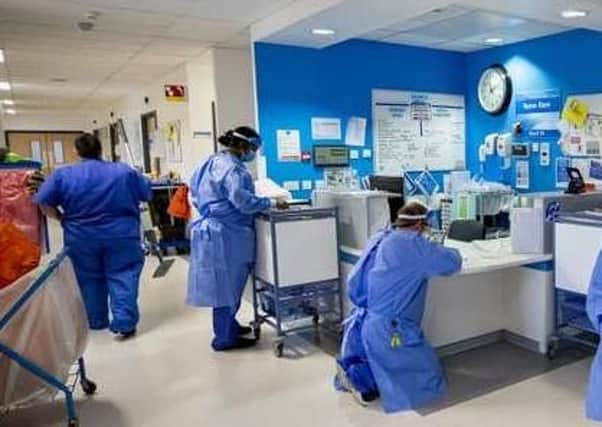Surge in demand for A&E sees ‘crowding’ return as coronavirus pressures ease


The latest waiting time statistics, published today, show a jump of more than a quarter in the number of people attending A&E from February to March.
Dr Paul Kerr, vice president of the Royal College of Emergency Medicine Northern Ireland, said: “Since January, hospitals and emergency departments have been under continued pressure.
Advertisement
Hide AdAdvertisement
Hide Ad“While things have eased from a Covid perspective, we are entering the next phase of recommencing hospital activity and services.”
The latest figures show that 3,490 people waited more than 12 hours for treatment at a hospital emergency department last month – a huge rise on the figure of 2,531 for March last year.
The figures also show a large jump in the number of patients turning up at A&E for treatment. In February, there were 42,484 total attendances – a figure that jumped to 54,240 as coronavirus pressures began to ease in March.
Dr Kerr said: “Demand is increasing, evident by the 26% jump in attendances from February to March. With this jump comes a significant rise in the pressure on staff.”
Advertisement
Hide AdAdvertisement
Hide AdThe figures also show that for type 1 emergency departments last month, 3.8% decided to leave without treatment rather than wait.
At the Royal Victoria Hospital, one-in-10 patients got up and left.
Dr Kerr said: “More concerning is the data that show in March 2021, an average of nearly 4% of patients left the emergency department before treatment, equal to nearly 2,000 patients.
“At one hospital 10% of patients left before treatment. These patients may be in a serious condition and they have not received the treatment they need.
Advertisement
Hide AdAdvertisement
Hide Ad“It is unconscionable that we are unable to provide care for everyone.”
Earlier this month, Health Minister Robin Swann said in the Assembly that it could take up to 10 years to tackle Northern Ireland’s waiting list problems.
While Mr Swann’s comments were mostly centred on the waiting lists for planned treatments, the Royal College of Emergency Medicine has warned that serious problems remain when it comes to emergency care.
Dr Kerr added: “Intense pressures and long delays mean we are also beginning to see a return of crowding in our departments. This is exacerbated by exit block, which is usually a result of flow issues and strongly linked to hospital-wide capacity.
Advertisement
Hide AdAdvertisement
Hide Ad“As the data show, January to March has been incredibly difficult. Exhausted staff have been working under increasingly high pressures, with limited capacity and resources. Numbers of ambulances have been queuing outside departments, waiting to admit patients. We have been really struggling.”